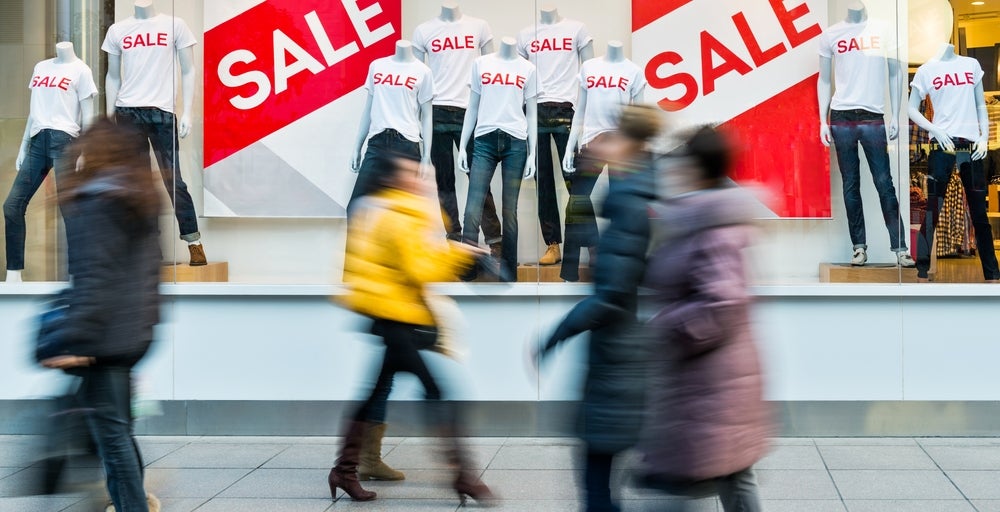U.S. brands spent $18.45 billion on in-store marketing in 2004, up nearly 5% from the year before, based on PROMO estimates.
In-store marketing — including P-O-P, retail merchandising and in-store services — grew mostly through more (and more sophisticated) P-O-P displays, and via in-store media such as TV and radio. Those vehicles will fuel 2005 growth as well.
P-O-P accounts for the bulk of in-store marketing. Spending rose 6% to $16.6 billion, per PROMO estimates based on In-store Marketing Institute data. P-O-P activity fell in the second half, but suppliers have seen a rebound in early 2005.
Retail merchandising is flat at $1 billion and could fall this year if marketers drop some in-store demos in favor of cheaper interactive displays.
In-store services fell about 2.5% to an estimated $854 million, with lackluster performance for traditional vehicles such as shelf-talkers and checkout coupons. That may turn around in 2005 as retailers upgrade and expand in-store radio and TV outlets (this year Wal-Mart moved its TV monitors to eye level) and brands execute the shopper marketing strategies they embraced in 2004.
Five percent of marketers earmarked the biggest portion of their promotion budgets for in-store activity, according to PROMO’s Industry Trends Report survey. (Nineteen percent carved out the most money for account-specific promos.)
Forty-four percent of marketers plan to increase joint promos with retailers this year; 46% will stay flat with 2004, per PROMO ‘s survey. Co-marketing will benefit from widespread adoption of shopper marketing, which heightens focus on in-store activity.
Procter & Gamble has led the shopper marketing push, with the July 2004 consolidation of a reported $4 billion in holistic planning, divvied up between Carat and Starcom MediaVest. (A second agency review bundled in-store, account-specific, direct marketing and promotions for 35 health and beauty care brands and split the work between Arc Worldwide, Saatchi & Saatchi X and The Integer Group.)
“We’ll see a lot more ‘place marketing’ in 2005 as brands shift advertising dollars to in-store media,” says Ben Ball, senior VP at consultancy Dechert-Hampe, Chicago. With 25,000 SKUs in the center of the store, only 20% or so get traditional mass ad support. Even a $15 million ad budget will reach consumers only 24 to 32 times a year, compared to 73 store visits. “Marketers are looking beyond their trade dollars to touch shoppers in the red zone, within four feet of the shopping cart,” Ball says.
In-store marketing agency Mass Connections, Cerritos, CA, teamed with In-Store Broadcasting Network to launch Audio Connection to air product info via in-store radio during in-store events. More than 13,000 stores begin using Audio Connection this month, including Kroger, Albertsons, Safeway, Ahold, Walgreen’s and Rite Aid.
Meanwhile, apparel and durables retailers (consumer electronics, appliances) are using more interactive displays that let shoppers interact with a brand before buying. (Niketown displays let shoppers order custom shoes, delivered two weeks later by mail.) Packaged goods brands will adopt interactive displays as a bridge between static P-O-P and spendy in-store demos, Ball predicts: “They’ll get more presence in the store over a longer period of time, at less cost.”
Interactive displays “are still a ways off,” counters Peter Breen, editorial director of the In-Store Marketing Institute, Skokie, IL. “Even if costs are lower in the long term, it’s still cheaper in the short term to have staff in store for a few days than drop a few million dollars into a display system.”
Demos and sampling are still strong, Breen contends. More grocers started formal sampling programs last year, and Wal-Mart planned to boost its in-store events by 30%.
Retailers have pressed for stricter background checks of demo and merchandising personnel. That prompted the National Association of Retail Merchandising Services (NARMS) to link with U.S. Investigations Services, Tulsa, OK, to provide background checks of third-party merchandising staffers to NARMS’ 500 corporate members. NARMS’ screening package, launched in February 2005, includes a Social Security search and a widescreen national criminal search including sex offender, retail theft, wanted persons and terrorist watch screenings. Staffers get a card that shows they’ve passed the screening, and show the card each time they show up for work at a store.
Separately, in-store marketing agency PromoWorks, Schaumburg, IL, launched a service to measure performance of individual sampling and demo teams. PSP (for “proven sales performers”) bowed in February 2005 after testing in Wal-Mart stores. The 50,000-plus demonstrators working in Wal-Mart stores each have a PromoPIN card that tracks attendance in stores. That info is combined with Wal-Mart’s Retail Link data and analyzed on the store level to track individuals’ performance against measures such as sales, distribution and on-target execution.
Meanwhile, a handful of marketers are using RFID tags to track P-O-P compliance. That could grow this year as other retailers follow Wal-Mart’s lead. Wal-Mart rolls out its RFID program to 600 stores and 12 distribution centers; the retailer began getting tagged cases and pallets for its Dallas stores from 137 suppliers in January. It’ll be another seven to 15 years before marketers tag individual product packages — and set the stage for RFID-enhanced promotions. “The cost will be overcome sooner than that, but the question is, which retailer will take on the privacy perception issue?” Ball says.
Staff shortages could slow adoption of RFID. Eighty percent of companies say there aren’t enough RFID professionals in the job pool, and 67% say training staffers to use RFID is one of their biggest challenges, according to a March 2005 survey by the Computing Technology Industry Association. Only 16% of respondents have begun an RFID pilot program, but 37% said they’ll be using RFID technology within three years. The Oakbrook Terrace, IL-based association has begun a certification program with six technology firms.
SNAPSHOT 2004
In-store marketing spending hits $18.5 billion
P-O-P reaches $16.6 billion; merchandising flat at $1 billion
Shopper marketing will fuel healthy 2005 growth
Interactive displays pique interest




